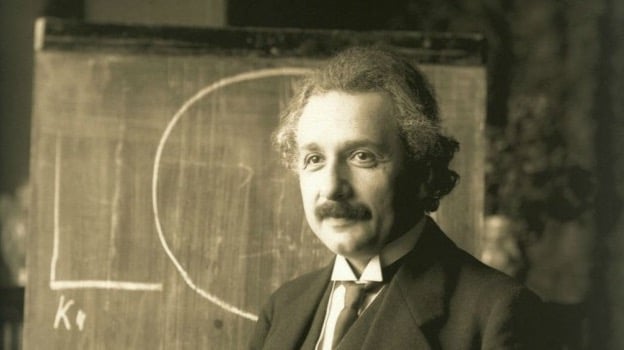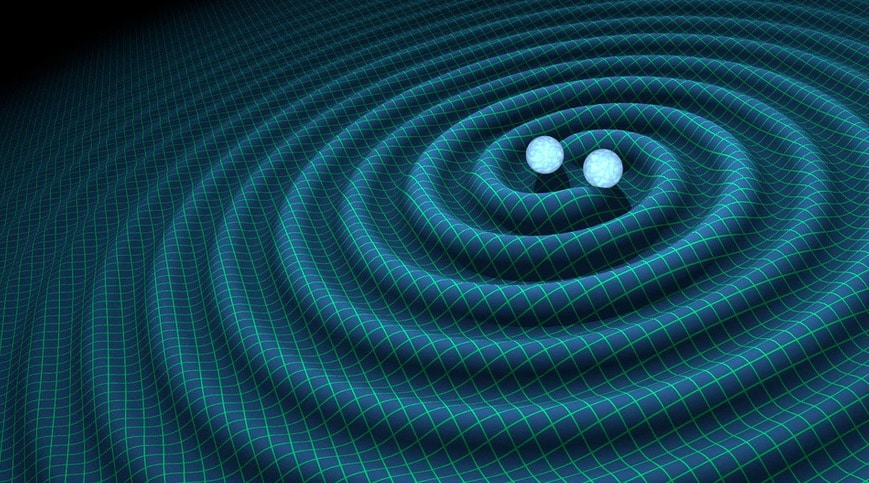On February 11, researchers belonging to the Advanced Laser Interferometer Gravitational Wave Observatory (LIGO) team announced at a press conference called by the US National Science Foundation that they had detected a gravitational wave. To put it more lucidly, the team of physicists had heard and recorded the sound of two black holes colliding a billion light years away, a fleeting chirp that confirms the last major prediction by Albert Einstein in his theory of relativity a century ago. The discovery has been hailed as a groundbreaking event in scientific history which would have exciting ramifications for the world of physics. If you have been unaware of these happenings and wondering what the hullabaloo is all about, we have deconstructed the entire thing for you:

What are gravitational waves?
Gravitational waves are extremely faint ripples in space-time that are believed to have traveled across the universe, originating from some staggeringly violent event or disturbances (in this case, the merger of two black holes 1.3 billion light-years away). Imagine a mesh net that is pulled at its ends. The kinks are similar to what a gravitational wave is like. Or think of tiny waves on the surface of a lake. The lake appears to be calm and smooth, but on closer and detailed inspection, you can see millions of tiny waves making up its glassy like surface. These tiny waves are akin to visualizing gravitational waves in space.
These waves were predicted to exist by Albert Einstein in 1916 as a consequence of his General Theory of Relativity. According to the theory, a fourth dimension is added to our concept of the Universe- the ‘space-time’, in which space and time are interwoven together.
Einstein postulated that mass warps space-time through its gravitational force. So when objects with mass accelerate, such as two black holes speeding towards each other, waves are emitted by them along the curved space-time around them at the speed of light.
If the object is more massive, the wave will be larger and easier for scientists to detect. The strongest waves are created by the most cataclysmic processes in the Universe – coalescing of black holes, explosion of massive stars, or the very birth of the Universe around 13.8 billion years ago.
How was this gravitational wave detected?
For this, you have to thank the LIGO laboratory, which works by bouncing lasers back and forth in two 4-km-long pipes, allowing physicists to measure extremely minute changes in space-time. They have two labs, one is set up at Livingston in Louisiana, while the other is located 4,000 km away at Hanford, Washington. On September 14, 2015, the researchers detected a significantly big change in their Livingston lab, what is commonly referred to as a ‘blip’ in the system. Seven milliseconds later, another similar blip was detected at the Hanford lab, implying that it had been caused by a gravitational wave passing through earth.
In the following months, researchers rigorously analyzed whether the signal could have been caused by anything else- caused by anything else- Earth -bound interference or noise, examined all possibilities and dismissed them.
The data was analyzed by a team of 1,004 scientists on the project with the results further peer-reviewed by other experts and published in the journal Physical Review Letters. The eventual conclusion was overwhelming- the blip had been caused by a gravitational wave. Also, the discovery had a statistical significant of 5.1 sigma, which in layman terms meant that there was only a 1 in 6 million chance that the result was a fluke. Moreover, the detected signal was almost perfectly in line with what scientists had predicted gravitational waves would look like, based on Einstein’s Theory of Relativity. The signal (named GW150914) can be seen below, with the predictions overlaid:

Why have gravitational waves been so hard to find?
Gravitational waves have been quite elusive, and even Einstein had doubts whether they would be ever detected, given their extremely tiny size. To give you a clearer picture, ripples produced by a pair of orbiting black holes would stretch a one-million-kilometre (621,000-mile) ruler on Earth by less than the size of an atom. Consequently, waves coming from tens of millions of light years away would disturb a four-kilometre light beam such as the ones used at LIGO by just about the width of a proton. That is tremendously tiny.
Have we found these waves before?
Well, the answer is no. One can, however, say that gravitational waves have been detected indirectly through previous efforts. Back in 1974, scientists Russell A. Hulse and Joseph H. Taylor Jr. discovered that the orbits of a pair of neutron of neutron stars in our galaxy, circling a common centre of mass, were shrinking at a rate consistent with a loss of energy through gravitational waves. For this, the duo was awarded the Nobel Physics Prize in 1993.
On March 17, 2014, Harvard-Smithsonian Centre for Astrophysics erroneously claimed to have identified gravitational waves. The Harvard group, working at BICEP2 (Background Imaging of Cosmic Extragalactic Polarisation) telescope, had reported that they had detected a twist in the polarization of ancient light that seemingly dated back to the big bang. However, within a month, they admitted their error.
Currently, detectors such as LIGO and its sister detector Virgo in Italy, have been developed to pick up any distortions. Earlier in December 2015, the European Space Agency launched a lab called Lisa Pathfinder, which aims to find gravitational waves in space.
Why is the discovery of gravitational waves so important?
The fact that the existence of gravitational waves has been confirmed heralds a new era in how key concepts like space and time are perceived by physicists, and opens new avenues in astronomy- allowing measurements of faraway stars, galaxies and black holes based on the waves they make. Scientists will now be able to search for the mysteries of the universe, its origins, observe the cosmos and study more about black holes and neutron stars. More detections can be expected in the coming future, as the lab is being further upgraded to catch more faint and distant signals. If it picks up signals like the primordial gravitational waves, which are extremely tough to detect, it would give a fillip to the theory of ‘inflation’ or exponential expansion of the infant Universe.
One can easily conclude that this discovery has been one of the most spectacular ones in scientific history, opening up endless possibilities to boost research in this field.













Leave a Reply